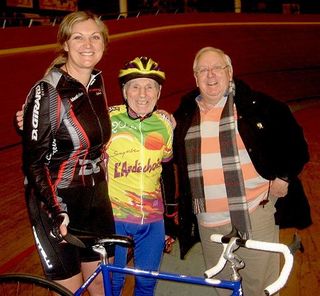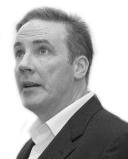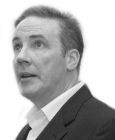Resilience
Building Resilient Organisations One Brain at a Time, Part 1
Sometimes the best pathways to resilience are indirect and unexpected.
Posted June 12, 2017

Resilience is defined by the American Psychological Association as “the process of adapting well in the face of adversity, trauma, tragedy, threats or even significant sources of stress.” Both people and organisations can be resilient - and it is through people, and stress-tested processes that organisations can learn to be resilient in the face of adversity.
Here, I want to focus on one possible pathway to resilient organisations, by focusing on changes that are possible within individuals. A good question is whether or not individuals are capable of responding and adapting to stress and adversity - whether mental or physical - right throughout the lifecourse.
A recent case study (2016) examines 'Maximal Oxygen Consumption and Performance in a Centenarian Cyclist' (abstract below). This paper tells the remarkable story of the remarkable Robert Marchand (he was born 26 November 1911, and retired from work in 1987, when he was 76) , a centenarian cyclist who, when he was 101 years old, set the one-hour cycling record for persons greater than 100 years old. Marchand broke the centenarian cycling record twice - first in 2012, and again in 2014. He took up cycling again after a more than 75 year gap - having not cycled since the age of 25.
Marchand improved on all the various measure of cycling performance - oxygen uptake, strength of pedal push, and maximal pedaling frequency.
Marchand's remarkable performance has several lessons:
First - it is never too late to improve your performance at something, if you are motivated to do so, and willing to work at at it;
Second - his performance improvement was a team effort - it involved a group of physiologists and others to measure his performance, and all of the other things involved in performance (from choosing an appropriate bicycle to maintaining the bicycle, to the use of a velodrome);
Third - the organisation around him is invisible, unless you step back and think about it. Someone has to organise things, get the performance measures done, ensure access to facilities and a hundred other small and large jobs to ensure individual success;
Fourth - organisations can build resiliently-performing individuals by investing in training, learning and measuring performance, and providing feedback quickly;
Fifth - non-sporting organisations should learning from team performance in sports. It is unthinkable today that sports performers and sports teams are not maintained in peak shape by providing an invisible and dedicated, active support team that provides psychological support, physiology, nutrition, and performance feedback.
Businesses that are serious about performance should invest likewise in their people. The business of sport is far ahead of other types of business in this regard.
I will be speaking about resilience and other issues at the 'Brain for Business' workshop on the September 8th - some places are still available. There is a great line-up of speakers for the day.
My new book 'A Brain for Business - A Brain for Life' is available from June 2017.
Case Studies in Physiology: Maximal Oxygen Consumption and Performance in a Centenarian Cyclist
Veronique Louise Billat, Gilles Dhonneur, Laurence Mille-Hamard, Laurence Le Moyec, Iman Momken, Thierry Launay, Jean-Pierre koralsztein, Sophie Besse
Journal of Applied Physiology, 29 December, 2016
DOI: 10.1152/japplphysiol.00569.2016
Abstract
The purpose of this study was to examine the physiological characteristics of an elite centenarian cyclist who, at 101 years old, established the one-hour cycling record for individuals ≥ 100 years old (24.25 km) and to determine the physiological factors associated with his performance improvement two years later at 103 years old (26.92 km; +11%). Before each record, he performed an incremental test on a cycling ergometer. For two years, he trained 5,000 km a year with a polarized training that involved cycling 80% of mileage at "light" RPE ≤ 12 and 20% at "hard" RPE ≥ 15 at a cadence between 50 and 70 rpm. Results: his bodyweight and lean body mass did not change, while his ⩒O2max increased (31 to 35 ml.kg-1.min-1; +13%). Peak power output increased from 90 to 125 W (+39 %), mainly due to increasing the maximal pedaling frequency (69 to 90 rpm; +30%). Maximal heart rate did not change (134 to 137 bpm) in contrast to the maximal ventilation (57 to 70 L.min-1, +23%), increasing with both the respiratory frequency (38 to 41 cycle.min-1; +8%) and the tidal volume (1.5 to 1.7 L; +13%). Respiratory Exchange Ratio increased (1.03 to 1.14) in the same extent as tolerance to ⩒CO2. In conclusion, it is possible to increase performance and ⩒O2max with polarized training focusing on a high pedaling cadence even after turning 100 years old.


